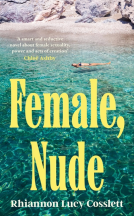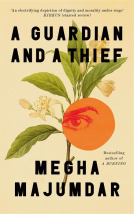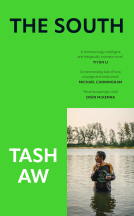
Islands of Abandonment
Life in the Post-Human Landscape
by Cal Flyn
This title was previously available on NetGalley and is now archived.
Send NetGalley books directly to your Kindle or Kindle app
1
To read on a Kindle or Kindle app, please add kindle@netgalley.com as an approved email address to receive files in your Amazon account. Click here for step-by-step instructions.
2
Also find your Kindle email address within your Amazon account, and enter it here.
Pub Date 21 Jan 2021 | Archive Date 31 Dec 2021
Description
‘Meticulous research, lyrical writing … A book that goes to the eeriest, most desolate places on Earth and finds hope’ LOUISE GRAY
This is a book about abandoned places: exclusion zones, no man’s lands, ghost towns and post-industrial hinterlands – and what nature does when we’re not there to see it.
Exploring some of the eeriest, most desolate places in the world, Cal Flyn asks: what happens after humans pick up and leave? Whether due to war or disaster, disease or economic decay, each extraordinary place visited in this book has been left to its own devices for decades. In this time, nature has been left to work unfettered – offering a glimpse of how abandoned land, even the most polluted regions of the world, might offer our best opportunities for environmental recovery.
As part of a journey that takes her around the world, Cal Flyn travels to Chernobyl where she meets the scant handful of people who returned to their irradiated homes. She spends a night on an uninhabited Scottish island where feral cattle – descendants of a herd set loose in the 1970s – live wild. She visits a botanical garden lodged high in the cloud forests of Tanzania where exotic plants brought from opposite habitats grow alongside native trees – a show of how adaptable our ecosystems might prove. She visits a Caribbean ghost town where volcanic flows have subsumed the streets. She explores derelict buildings ruled by urban scavengers, sneaks through barbed wire, and walks a beach made of bones on the shore of a dwindling sea.
By turns haunted and hopeful, Flyn’s luminous journey is pinned together with new ecological insights that map an answer to the big questions: what happens after we’re gone – and how far can our damage to nature be undone? Though these strange, forgotten landscapes represent some of the most damaged spots on the planet, they are also proof how much potential we have for biological diversity, regrowth and a chance at redemption.
Available Editions
| EDITION | Ebook |
| ISBN | 9780008329785 |
| PRICE | £3.99 (GBP) |
| PAGES | 272 |
Average rating from 21 members
Featured Reviews
 Rachel S, Bookseller
Rachel S, Bookseller
This is SO interesting, I am definitely going to buy this on audio too so I can listen to it multiple times - I feel like I'd pick up something different each time. Really enjoyed learning about these bonkers places!
Islands of Abandonment describes settings of apocalyptic scenes which are planet harbours in clutches around the world now. Their source of manufacture are honed primarily by man, be it through forbidden experiments, nuclear meltdown, toxic contamination, warfare, political or social collapse. Gaia can also wield destruction, through tectonic forces & biological toxicity. All of these could be the backdrop any novel, a thrilling end of civilisation.
Flyn gives a first person perspective of these landscapes. She hires a car, travels out to them to observe what she sees and talk to the natives which have been left behind. Her observations are velvet for the imagination; her descriptions vivid, visceral and tactile. She personifies the environment to root you in place “Trees burst from the bodies of their fallen ancestors. Vampiric strangling figs throw woody limbs around their victims’ shoulders, bleed them dry.”
For all the thrilling darkness, this work focuses on the good which sprouts from the bad, the silver lining to any dark cloud. Ecosystems which come up without the guidance of mankind. The natural world is adapting to the forces which we, as a species, throw up. It does not defend the corrupting nature of mankind, or write off the destruction as healable, but offers a glimpse, where after every eclipse in the past, where darkness and destruction reduced the biodiversity of the planet, the sun shined after and what was left evolved to fill the spaces left behind.
A triumph of writing & a well researched text. Highly recommended for those who love the apocalyptic genre, environmental studies or care for the planet. Five stars!
 Kelly F, Reviewer
Kelly F, Reviewer
Wow, what a fascinating book. The author takes us off to locations all over the World. We see the raw damage and destruction that has been done to nature through previous habitation and also climate change and disaster and how these places have been abandoned. But there is also a hopefulness to this tale as we learn of eg. Ecosystems in place- plants and animals and the hoped revival of the areas.
The author has done a great job of showing both sides. The descriptions are detailed and enhanced by the images. Certainly a book that makes you reflect on the environment and the impact we have.
My thanks go to the publisher, author and Netgalley for providing this arc in return for a honest review.
 Reviewer 450044
Reviewer 450044
A wonderful book. Very interesting and absorbing no spoilers here but I learnt so much. A fabulous read.
 Book Trade Professional 572081
Book Trade Professional 572081
Wonderful and unexpected. Quite a view books published in the last few years touching on this subject but this is the best I have read.
 Cath H, Bookseller
Cath H, Bookseller
This was never going to be a ‘pleasant’ read - how could the stories of human’s collective destruction of habitats of the world around them ever be? But faced with the constant barrage of climate disaster, biodiversity loss and the suffering of so many societies around the world in the news that reaches us daily I was seeking some cause for hope in Cal Flyn’s travels into the desolate places left behind by us, and she doesn’t disappoint. Amidst the rubble of anthropogenic landscapes, filled with toxins, pollutants and aliens, the resilience of ecosystems shines bright, brilliantly described in Flyn’s poetic prose. Never promising us a happy ending to this destructive journey we’ve been on for generations, this is very much a read for the hopeful realists amongst us - to remind us we can still make a difference, and that just perhaps, if enough of us do, nature will work with us to bolster our efforts.
Commissioned writer for The Skinny:
"Flyn interrogates the ecological impact of human activity on each location and to what extent nature can bounce back in a truly engaging manner. By turns cautionary but with glimmers of hope, Islands of Abandonment is not only a compelling travelogue but also a fascinating insight into the relationship between man and nature."
Full review: https://www.theskinny.co.uk/books/book-reviews/islands-of-abandonment-by-cal-flyn
I started reading Islands of Abandonment largely on the strength of its cover: a lopsided house sits in the water, with birds lined along the roof as if they very much belong there. This image perfectly encapsulates the book's focus: when humanity moves out, nature moves back in. I had no expectations, yet I certainly wasn't disappointed. This is a book about nature, with heavy doses of history and philosophy, all thoroughly researched and wrapped up in prose which wouldn't look at all out of place in a flowerbed.
This is an encouraging book, by all accounts. Though Flyn gives a clear picture of the horrific natural damage that humanity's actions has caused, particularly over the last few centuries, she draws attention to the natural world's surprising resilience. Where the landscape has been ruined and who ecosystems seriously disturbed or completely dismantled, Flyn points to the extensive evidence which points to life's surprising habit of acclimatising and prevailing, from Chernobyl to urban Detroit, and all over the world.
It's ostensibly a book about nature, though it opens a doorway into so many areas of history. You can learn about the division of Cyprus as Flyn encounters the animals which have made their home in the buffer area which separates north and south. You can consider the environmental impact of the Mongol hordes and Columbus' arrival on American shores. There's agriculture in the Soviet Union, volcanoes in Monserrat, early industrialisation in the United States, and so on.
In spite of covering such a span of time and so many concepts, the book remains easily readable. The beautiful and floral language doesn't get in the way a detailed discussion of the science. The list of references stands testament to the extent of the research. The author visited many of the sites featured in the book, and her writing helps you to feel as if you were there too. I think this might be the only time I've heard the word "mordorian" used outside of Tolkien, yet it really conveys the devastation and barrenness of the landscape.
I would do well to better educate myself in the natural world and the problems confronting it, in which case Islands of Abandonment is a brilliant place to start. A lot of damage has been done, but there's hope yet. Life will out.
 Reviewer 501400
Reviewer 501400
3.5 rounded up
Islands of Abandonment sees Cal Flyn travel to different locations around the world which have been altered by humans and then abandoned for various reasons - including natural disaster (Plymouth, Montserrat) and events which have occurred at the hands of people (Chernobyl and the Cyprus Buffer Zone - to see how these places have adapted in the aftermath of human intervention and as they "re-wild" again. The adaptation Flyn focuses on is primarily that of plants and animals, however some chapters focus more on the people who live in these areas.
The book is made up of a mixture of a travelogue of sorts, telling the story of the places and the people the authors meets, as well as research Flyn does into the history of these locations. The chapters on places in Scotland (Swoma and Five Sisters shale bings) were the ones I found to be the most enjoyable, and I found that this made for a different and enjoyable non-fiction read.
 Abby S, Reviewer
Abby S, Reviewer
A haunting bread a lyrically written story of places we have abandoned.We follow the author as she takes us on a tour of famous places that are now decrepit falling apart.So Interesting a book that made me think of our world the environment.A book I will be recommending,#netgalley#4thestatebooks
Readers who liked this book also liked:
Niamh Hargan
Parenting, Families, Relationships, Travel, Women's Fiction


















